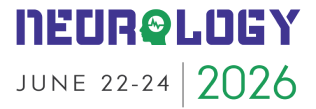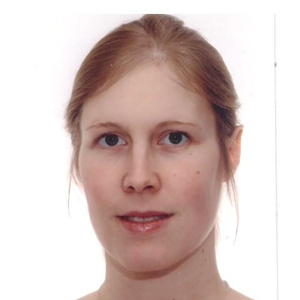Title : Examining bilateral cortical activity in patients with parkinson`s disease and healthy controls during speech production: A fNRIS study
Abstract:
Background: According to the “Hemispheric Asymmetry Reduction in older Adults” model (HAROLD; Cabeza, 2002) healthy elderly (HE) may show bilateral cortical activity patterns compared to younger subjects showing more left lateralized cortical activity. The HAROLD model has been discussed as a compensatory process allowing HE to activate more “resources” to respond to cognitively demanding tasks. Parkinson´s disease (PD) is a progressive neurodegenerative disease affecting different motor and non-motor abilities. Regarding Parkinsonian speech, patients may often suffer from dysarthria, a condition summarizing an array of speech deficits related to the breakdown of speech motor control due to PD (Darley et al., 1969 a, b). Furthermore, with PD progression, further cognitive detriment ranging from mild cognitive impairment (MCI) to dementia (Aarsland et al., 2005; Williams-Gray et al., 2007) may occur. Taken together, it may be hypothesized that PD alters or inhibits bilateral cortical activity. Thus, this study shall address whether PD patients may resort to similar bilateral activity patterns as observed in HE peers or not.
Objective: This study examined cortical activity (e.g. hemodynamic changes) employing functional near-infrared spectroscopy (fNIRS) during different spontaneous and elicited speech production tasks in people aging with and without PD.
Methods: Functional NIRS was measured in 19 non-demented PD patients (Age Mn 66.5 yrs. [54-75]; 6.2) having no deep brain stimulation (non-DBS) and 18 HE (Age Mn 62.8 yrs. [52-77]; 7.8) during three different speech production tasks: (i) sentence repetition, (ii) reading and (iii) spontaneous speech (short interview). The speech tasks are outtakes from the Bogenhausener Dysarthrieskalen (BoDys; Ziegler et al., 2018) being a standardized German measurement for dysarthria. The 8x8 fNIRS system integrated short channels and covered the Broca´s area, the Motor Cortex and the Wernicke´s area, as specified by the fOLD brain atlas (Morais et al., 2018). For calculations, fNIRS signals during speech task blocks were averaged for every task and group, respectively. Statistical analysis was conducted with SPSS (V.28) and results were seen as significant if p < .05 or less.
Results: Paired samples t-tests for PD patients showed only one significant difference within the spontaneous speech task in the Motor Cortex (p = .04), with higher fNIRS signals in the left compared to the respective right hemispheric area. In the HE group, significant differences between the hemispheres were found in the Motor Cortex across all tasks (i.e. reading, spontaneous speech and sentence repetition) (p < .03). There, higher fNIRS signals were always found in the left compared to the right cortical structures.
Interestingly -across groups- there were no significant differences between hemispheres within the sentence repetition task. Finally, fNIRS signals in PD patients were lower than those observed in HE controls (p < .01) across all conditions.
Conclusions: Results suggest that hemodynamic changes were lower in PD patients compared to HE controls, and that these were mostly bilateral. Interestingly, in HE left lateral activation remained within the Motor Cortex. In contrast, PD showed bilateral activation patterns possibly indicating a compensatory mechanism kicking in once neuronal deficiencies inhibit normal processes.
Audience Take Away
- Professionals are introduced to the theories of the HAROLD model, and how recent results may be linked to it: Results from the bilateral activity, which is -surprisingly- more pronounced in patients suffering from neurodegeneration than age-peers with “normal” age-related degeneration, may contribute to the current knowledge of “natural compensatory mechanisms”, which have so far received less attention in research, teaching and clinical practice
- In research, cortical bilateral activity should not be overlooked or mislabeled as artifact (for instance), as different cortices may have or take over more functions and may thus prove to have more neuroplasticity in age than formerly expected
- Natural compensatory mechanisms can be used in clinical practice and thus shape new approaches and therapies
- In teaching, recent findings contribute to evidence-based practice, critical thinking and allow novel designs




